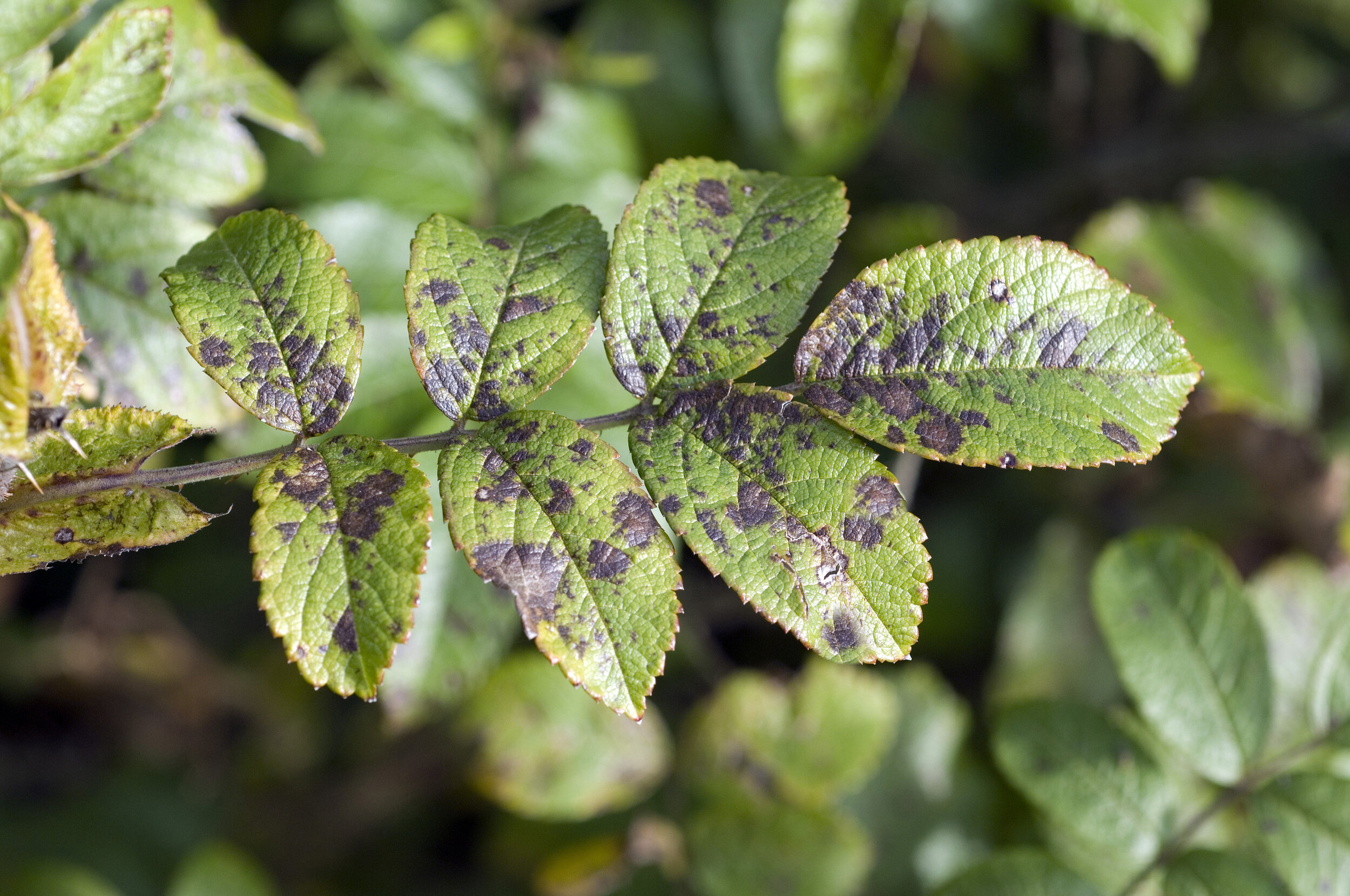Black spots are one of the most common symptoms of plant disease. Not only are they unsightly, but they can weaken the plant - the best thing to do is to try and catch it early.
WHAT IS BLACK SPOT FUNGUS?
Black spot fungus ( Diplocarpon rosae ) is a fungal plant disease that arises when conditions are damp, resulting in round black/dark-colored spots typically on the plant’s leaves. Despite the name ‘rosae’, black spot fungus doesn’t just affect roses - although this is perhaps where it is seen most frequently. Also despite its name, the spots can actually be brown or gray in color. This is actually just dead leaf tissue caused by the fungus. It is often during springtime that it starts to become a problem, when temperatures are beginning to rise but exposure to rainfall is still quite high, creating warm, wet conditions that fungi thrive in.
If you manage to catch it early, the spots will be very small - around the size of a pinhead.
SYMPTOMS
Black, gray or brown dark-colored spots - usually seen on the leaves, but can sometimes also spread to the stem and/or flowers
Yellowing of leaves
Premature dropping of leaves
General weakening of the plant
Note! Black spots can also be caused by Pseudomonas bacteria

WHAT TO DO NOW
Black spot fungus can spread rapidly - spores can be dispersed when watering, by splashing rainfall, and by the wind. Therefore, it’s important to be thorough when treating an infected plant.
Firstly, you should isolate the infected plant - this fungus spreads very fast so make sure to remove all infected leaves right away. Luckily these are easy to identify - they are the ones with the spots! Then you should fully destroy all the material that you’ve removed in order to try and help prevent spread/re-infection.
If possible, clean and sterilize any pruning tools that you have used in the process, and regularly change your gloves to avoid spreading the disease between plants
Use a fungicide . There are several good ones on the market, and some are even organic.
You can also use Neem oil . This is a good natural alternative to fungicide.
Check all of your plants from time to time to make sure the fungus hasn't spread.
Make sure that the plant has good drainage (always use pots with holes) to help prevent the fungus from growing.
You can also try to avoid overhead watering for a while, as this can allow standing water to pool on the leaves, which again creates an environment where fungus can take hold. Overhead watering may also increase the risk of spreading any leftover spores between leaves as the water trickles down.
QUESTIONS
HOW CAN I PREVENT THIS FROM HAPPENING AGAIN? When conditions are especially warm and wet, keep an eye on your plants to try and catch out early signs of an infection - this will make it much easier to treat before it starts to spread drastically. For previously affected plants, avoid overhead watering and make sure to thoroughly prune back any affected material (and dispose of it properly!). You can also try to avoid watering on cloudy days when possible, as exposure to sun will help prevent black spot from taking hold. Additionally, ensuring that your plant has good airflow is another effective preventative measure.